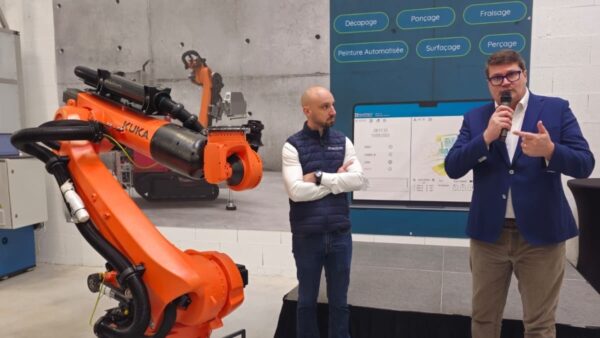Researchers from Baidu Research Robotics and Auto-Driving Lab (RAL) and the University of Maryland, College Park, have introduced an autonomous excavator system (AES) that can operate with no human intervention for more than 24 hours, shifting as much material as an experienced human operator.
The system was tested at a waste disposal site, a toxic environment where automation is in strong demand.
They say the technology is relevant given the worldwide shortage of skilled excavator operators at a time when the size of the global market for excavators is forecast to grow by some 43% from 2018 to 2026 – from $44.12bn to $63.14bn.
Safety is another factor, with excavation accidents causing around 200 casualties a year in the US, they said.
“This work presents an efficient, robust, and general autonomous system architecture that enables excavators of various sizes to perform material loading tasks in the real world autonomously,” said Dr. Liangjun Zhang, corresponding author and the Head of Baidu Research Robotics and Auto-Driving Lab.Â
The system uses LiDAR, cameras, other sensors and algorithms to perceive the environment and identify target materials.
It was tested in winter weather conditions, where vaporisation hampers the sensing performance of LiDAR.
The amount of materials excavated, in both wet and dry form, was 67.1 cubic meters per hour for a compact excavator, which is in line with the performance of a human operator.
“AES performs consistently and reliably over a long time, while the performance of human operators can be uncertain,” said Dr. Zhang.
Researchers also set up ten different scenarios at a closed testing field to see how the system performed in numerous real-world tasks. After testing a variety of large, medium-sized, and compact excavators, AES was ultimately proven to match the average efficiency of a human operator in terms of the amount of materials excavated per hour.
“This represents a key step moving towards deploying robots with long operating periods, even in uncontrolled indoor and outdoor environments,” said Dr. Dinesh Manocha, professor at the University of Maryland.
Image: The robot digger worked round the clock at a waste disposal site (Baidu Research Robotics and Auto-Driving Lab)
Further reading:






